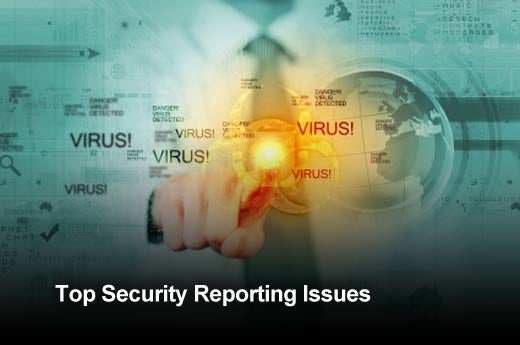Organizations of all sizes spend time and money installing solutions to help protect their networks and keep their IT environment protected. Many of these solutions can do their job when operational but, unfortunately, are rendered useless when they are not installed, become outdated, or are not actively running or configured properly. One of the biggest challenges for every organization is to evaluate their security posture as these solutions are lacking sufficient self-health validation reporting, which causes an unclear picture of your entire security posture.
According to Hilik Kotler, executive vice president of product development at Promisec, inaccurate reporting is widespread yet often not talked or written about. However, this “dirty little secret” of reporting errors could have grave consequences if left unaddressed. What are the most headache-inducing reporting issues and how can IT address them? Click through to find out.
Click through for the most headache-inducing security report issues and how IT can address them, as identified by Hilik Kotler, executive vice president of product development at Promisec.
How many security and IT operations tools does your organization deploy? The answer is likely in the double digits. As a result, there is a lot of information available at any IT staffer’s fingertips. But this could provide a false sense of security: When it comes to these solutions’ reporting, they are often incomplete and do not always present the reality. From PC lifecycle tools to antivirus, to patching systems and everything in between, the quality of data makes it near impossible to make sense of it in a meaningful way.
There is often another hurdle that must be addressed: the accuracy of that data. Most often, this occurs in the form of false positives, or worse, false negatives. As organizations increasingly load up on different security and operations technology and tools, the conflicting information they provide can also create a major challenge because administrators are left responding to disparate pieces of information that can point them in several different — and not always accurate — directions.
Though many of the issues already raised suggest that existing tools are to blame, it is not fair to put them at fault. In fact, most solutions today do an impeccable job at what they were developed to do — patching, deployment, network virus detection, intrusion detection, and so on. But because reporting is not their first and foremost purpose in the IT ecosystem, many of their reporting features are inadequate, incomplete and lack the robust level of depth and breadth necessary for today’s compliance and audit reporting.
In some organizations, one of the biggest hindrances to IT security reporting is not technology, but the people and processes that support it. For example, duplicative functions across multiple organizational layers can create the IT equivalent of the bystander effect, where everyone thinks another person is in charge and no one steps up to own the reporting function or address emerging issues, thus leaving the entire company at potential risk. This kind of poor organizational structure can also lead to no standardized processes or supporting technology, further compounding an already complex issue.
Because of the challenges with the quality and quantity of reporting data, IT organizations are often left feeling unsure of what information to trust. Which data is accurate? How do you know which tool is providing the best insight? Where is action required? No vendor can claim complete trustworthiness as a product feature, but it is critical for organizations to quickly identify which tool regularly gives them the best — that is, the most accurate and reliable — information so they can cut through the clutter of several systems.
How can an IT organization overcome these issues and improve security reporting? It starts with improving workflows within the organization — clarifying the roles and responsibilities for reporting within the team, creating specific, standardized processes, and aligning on metrics for success. Only then does it make sense to implement technology. Rather than a rip and replace of existing solutions, the ideal approach is to find a single, vendor-agnostic tool that can look across all security and management offerings in a dispersed IT environment and deliver a single, accurate snapshot of activity, vulnerabilities, necessary patches, compliance, and whatever other reporting requirements an organization needs. Only then will IT’s dirty little secret of reporting troubles be transformed into a helpful — and often necessary — advantage and value add to the entire organization.









